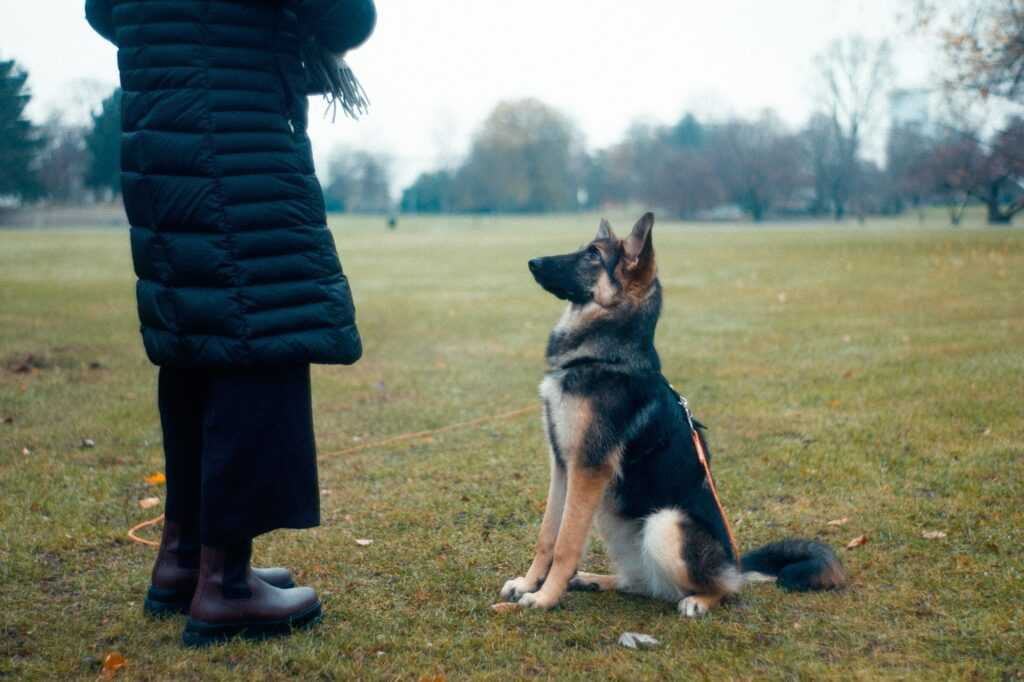Understanding Common Pet Behaviors
Recognizing common pet behaviors helps owners address their pets’ needs accurately. Different species express themselves uniquely.
Dogs: Tail Wagging, Barking, and More
Dogs communicate through various behaviors. Tail wagging indicates excitement or happiness when paired with a relaxed body, but a stiff wag shows alertness or aggression. Barking serves many purposes; frequent barking might signal a need for attention or an alert to danger, while a lower pitch often indicates fear or aggression. Growling signals discomfort or a threat.
Cats: Purring, Tail Movements, and More
Cats use subtle cues to communicate. Purring usually signifies contentment, but in some cases, it can indicate pain or distress. Tail movements convey a cat’s mood—an upright tail shows friendliness and interest, while a twitching tail signals irritation. Slow blinking indicates trust and affection. Hissing or growling reveals fear or aggression.
Birds: Singing, Feather Ruffling, and More
Birds express themselves through sounds and body language. Singing generally denotes happiness or a claim to territory. Feather ruffling typically means a bird is preening or trying to maintain body temperature. Head bobbing can show excitement or a means of seeking attention. Silence or excessive noise might indicate stress or health issues.
Understanding these behavioral cues enables better interaction with pets, enhancing their well-being and reinforcing the bond shared.
Decoding Body Language
Interpreting a pet’s body language helps in understanding its emotions and needs. Recognizing common postures and facial expressions can provide valuable insights.
Postures and Their Meanings
Pets use various postures to communicate their feelings:
- Dogs: A relaxed dog typically has a loose stance, ears up, and tail wagging. A scared dog may crouch low with its tail tucked. An aggressive dog often stands rigid with a raised tail and ears forward.
- Cats: A content cat sits or lies down with a stretched body. A frightened cat may arch its back and puff its fur. Defensive behavior in cats often includes hiding or crouching with flattened ears.
- Birds: A calm bird stands on one leg with fluffed feathers. An anxious bird may exhibit rapid wing flapping. Aggression in birds is often shown through spreading wings and making vocal threats.
Facial Expressions

Facial expressions are vital in discerning a pet’s mood:
- Dogs: Relaxed dogs have open mouths and soft eyes. An anxious dog shows whites of its eyes, known as “whale eye,” and an open mouth with a tense jaw. Aggression is often marked by bared teeth and direct eye contact.
- Cats: Content cats half-close their eyes and may slow-blink. A stressed cat might have dilated pupils and twitching whiskers. An angry cat displays flattened ears and a wrinkled nose.
- Birds: Relaxed birds have smooth feathers and closed beaks. An alert or scared bird shows widened eyes and raised head feathers. Aggressive birds may stare with a wide-open beak.
Understanding these body language cues is essential for addressing your pet’s needs timely and effectively.
Identifying Behavioral Changes
Pets often exhibit behavioral changes for various reasons. Recognizing these changes helps address any underlying issues effectively.
Common Causes for Sudden Changes
Several factors can lead to sudden changes in pets’ behavior. Health issues, such as pain or discomfort, are common triggers. For instance, a normally active dog becoming lethargic might indicate an injury or illness. Environmental changes also affect behavior. Moving to a new home or introducing a new pet can cause stress and anxiety, leading to altered actions. Additionally, changes in routine, like a new feeding schedule, might confuse pets, resulting in noticeable behavioral shifts. Hormonal changes, particularly in unspayed or unneutered animals, can also cause fluctuations in mood and activity levels.
When to Seek Help from a Veterinarian
Consult a veterinarian if your pet shows persistent or severe behavioral changes. Signs of distress, like prolonged whining, excessive grooming, or unusual aggression, often indicate underlying medical or psychological issues. Sudden changes in appetite, sleep patterns, or hygiene habits also warrant a veterinary visit. If your pet’s behavior disrupts their daily activities or quality of life, seek professional advice. Early intervention can prevent potential problems from worsening and ensure your pet’s well-being.
Training and Communication
Training and communication are vital for a strong bond with your pet. Using clear methods helps convey expectations and strengthens the relationship.
Positive Reinforcement Techniques
Positive reinforcement shapes desired behaviors in pets. I use rewards like treats, praise, and playtime to encourage good behaviors. For example, when my dog sits on command, I immediately reward him with a treat. Timing is critical; rewards are given right after the desired behavior to reinforce the connection.
Setting Boundaries and Establishing Routines
Setting boundaries and routines creates a structured environment for pets. I designate specific areas for activities like feeding, sleeping, and playing. Consistency in routines reduces anxiety and helps pets know what to expect. For instance, feeding my cat at the same time every day helps establish a sense of security. Clear boundaries, like not allowing pets on furniture, teach them acceptable behaviors.
Bonding and Building Trust
Understanding your pet’s behavior fosters a deeper connection. Bonding and building trust are critical for a healthy relationship with pets.
Playtime and Engagement
Playtime is essential for bonding. Through active engagement, you learn about your pet’s preferences. Dogs might enjoy fetch, while cats may prefer interactive toys. Birds can benefit from toys that stimulate their intelligence. Observing these activities reveals their comfort levels and joy. cons Devote at least 15-30 minutes daily for focused play. Consistent engagement builds trust and reduces anxiety. I always keep a variety of toys to keep my pet mentally and physically stimulated.
Recognizing Stress and Comfort Signs
Watching for stress and comfort signs helps build trust. Common stress signals include yawning or hiding in cats, trembling or excessive barking in dogs, and feather plucking in birds. Conversely, comfort signs might be purring in cats, relaxed body language in dogs, and singing in birds. If you notice stress indicators, provide a safe, quiet space and consult a vet if behaviors persist. Recognizing and responding appropriately to these signs strengthens your bond over time.


 Founder & Pet Wellness Advocate
As the visionary founder of Pet Paw Shack, Kimberliene Sabinin is passionate about helping pet owners provide the best care possible for their furry companions. With a background in veterinary science and animal nutrition, Kimberliene brings years of experience in promoting pet health, safety, and well-being. Her mission is to empower pet owners with practical knowledge about proper nutrition, behavior training, and overall pet wellness.
Founder & Pet Wellness Advocate
As the visionary founder of Pet Paw Shack, Kimberliene Sabinin is passionate about helping pet owners provide the best care possible for their furry companions. With a background in veterinary science and animal nutrition, Kimberliene brings years of experience in promoting pet health, safety, and well-being. Her mission is to empower pet owners with practical knowledge about proper nutrition, behavior training, and overall pet wellness.
